PHOTO |
 China
World
Newsmaker
Slides
Weekly Photos
Share Your Photos
Special China
World
Newsmaker
Slides
Weekly Photos
Share Your Photos
Special
|
|
 |
Large Medium Small |
Bunny Business
|
|
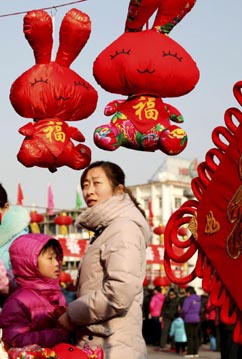 People select decorations in the shape of the rabbit at a New Year market in Huairou district, Beijing Jan 22, 2011. [Photo/Xinhua] |
Pet bunny sales multiply like rabbits As the Year of the Rabbit approaches, sales of anything related to this small mammal are booming. The sales of pet rabbits in Chengdu, Southwest China's Sichuan province have nearly doubled compared to the same time last year, the Chengdu-based Tianfu Morning Post reported Wednesday. A common domestic rabbit costs only 15 yuan ($2.28) to 35 yuan ($5.32), according to the report. High-grade rabbits like Holland Lop, Angora, and Lionhead breeds are priced at several hundred yuan. Rabbits that are purple, brown or black in color are expensive but popular among white collar workers due to their rareness, said Tan Nenghui, a local pet shop owner in Chengdu. |
|
|
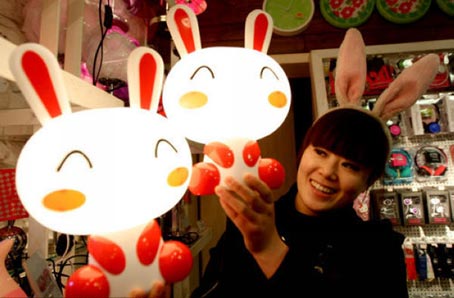 A store staff member shows rabbit-shaped desk lamps in in Huaibei, East China's Anhui province, Jan 12, 2011.[Photo/CFP] |
On the Cinema
|
Rabbit cartoons to be released Six animation films involving characters of rabbits will be released this year, according to the State Administration of Radio film and Television.
The films include the first domestic 3D animation film, Legend of a Rabbit, and Moon Castle: The space adventure, the third movie of the Chinese cartoon series of Pleasant Goat and Big Big Wolf. The producers are confident that the animal-themed New Year movies will be a hit, eyeing high box-office receipts and related product development. |
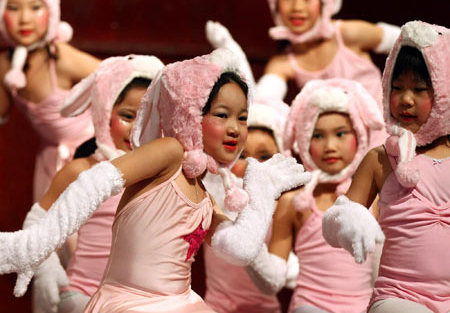 Children in rabbit costumes dance at a Spring Festival gala in Toronto, Canada on Jan 22, 2011. [Photo/Xinhua] |
Bunny Fun
|
|
Chinese leap at chance to buy a bunny Pet shops in China and throughout Asia have been busy trying to keep up with demand for bunnies ahead of the start of the Year of the Rabbit, something that has prompted warnings from animal rights campaigners. Pet shop owners in cities including Tianjin, Changsha in Hunan province, Xuzhou in Jiangsu province, Shenzhen in Guangdong province and Shijiazhuang in Hebei province, have all reported that rabbits are now more popular than more traditional pets. Meanwhile, quarantine inspection officials also warned that rabbits can be difficult pets to keep. Under the law, vendors and their pets are required to regularly visit quarantine stations for pet immunizations and disease prevention measures, and to receive the relevant certificates.More>> |
Jade Bunny
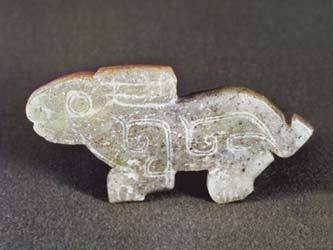 The jade rabbit pendant is top-rated relic at the Tianjin Museum of Art. [Photo/China Daily] |
A gray-cyan jade rabbit pendant is set to have viewers hopping to it as the Year of the Rabbit dawns. The top-rated relic at the Tianjin Museum of Art is believed to have been unearthed from Shang Dynasty (1766-1122 BC) ruins in Henan province. The museum acquired it from a private collector in the 1950s. The small artifact - 3.1 cm high, 6.4 cm wide, and 0.4 cm thick - is a big deal in archeological terms. Its creators carved the flat black jade with parallel, incised lines (commonly known as double-hook lines), in the pattern of flowing clouds and gouged out two small holes for its front legs. With its eyes wide and ears down, the rabbit looks as if it's ready to run.More>> |
Photos
|
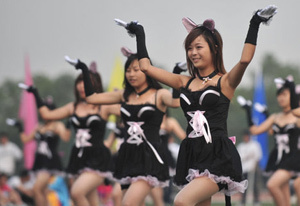 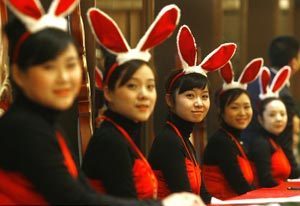 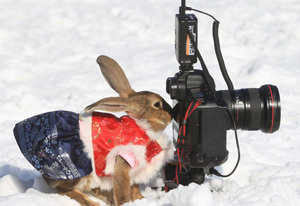 |
| Cheerleaders in bunny costumes Dress up like a bunny Bunny photographer |
|
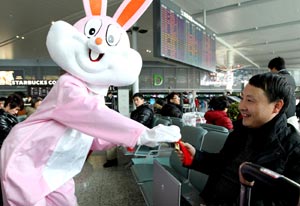 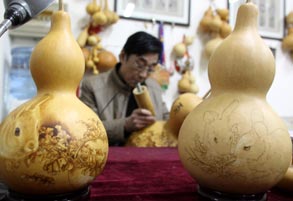 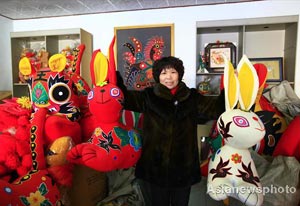 |
| Lucky bunny at Shanghai airport Pyrography of rabbits on the gourd Handmade toy bunnies |